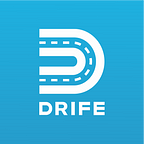Technical Architecture — Smart Contract Driven, Service that Scales
The first wave of the blockchain revolution began with the emergence of cryptocurrencies, a ledger-based currency trading system. Now, the new generation of groundbreaking developments to come out of blockchain is reshaping other forms of online commerce and negotiation. It is allowing for up-and-coming businesses like DRIFE to offer a wide range of services through decentralized applications, with no third-party involvement.
Smart Contracts: The Second Wave
Smart contracts are the latest development in automated business applications that run on a blockchain. They are self-operating and allow for the removal of any administrative costs typically imposed in industries like delivery and ride-hailing apps. Smart contracts run on a set of predetermined conditions that once met, perform the agreed-upon transaction, transmission of data, or exchange of funds.
Real-World Applications of DRIFE’s Smart Contracts
DRIFE provides users with a decentralized ride-hailing platform that empowers drivers and passengers, thanks to a plethora of backend microservices that work in conjunction with smart contracts to create a scalable enterprise-level application. For example, a Ride Contract helps control information regarding bookings, ratings, ride flow management, and other details. A Stable Token Contract allows for the management of payment through stable tokens backed by government-issued currencies like USD, CAD, and EUR. Other smart contracts include, but are not limited to a Utility Token Contract which handles the creation and transfer of DRF tokens, and a User Service Contract, which stores ride-related data such as ratings and ride count.
The abundance of microservices in our technical architecture also plays a critical role in the ability of the app to operate at scale. User service allows riders to access the platform and manage their profile, report issues, and other settings. On the other hand, the driver service allows driver partners to upload their information to the platform such as vehicle models, relevant documents, and reporting issues as well. Blockchain service initiates smart contracts which then transfers the transaction onto the blockchain. Again, these are just a few of the many smart contracts and microservices features within the platform that enables our service to reduce operating costs. All of which showcase the DRIFE platforms distinct advantage over the rest of the ride hailing market.
What Sets Smart Contracts Apart from Corporate Rules-Based Software
A common question surrounding this new technology is, how do smart contracts differ from software that applies automated business rules in corporations?
At a glance, they seem to share the same principle; however, smart contracts perform automated transactions that reach beyond the limits of corporate boundaries. They can apply the programmed rules to other partners that are also allowed on the blockchain. Current automated business software cannot perform this complex function. It’s important to understand that smart contracts are a programmed set of rules, therefore, they are not “smart”, nor are they binding contracts in the legal sense. Instead, they allow a multitude of businesses to streamline their operation and trim excess time, expenses during a transaction, and condense features that would otherwise require several applications.
Smart Contracts Improve Your Digital Experience
The smart contracts and microservices that makeup DRIFE’s technical architecture allow business owners (drive partners) to have more control over the service they provide while at the same time providing consumers with a better overall experience. Visit DRIFE’s website today to see more of how this innovative technology (Run the $DRF utility token) is changing the future of ride-hailing.
About DRIFE
DRIFE is the heavily anticipated ride-hailing service of the future. As a Decentralized ‘Taxi 3.0’, we strive to disrupt prevailing business models and create a more equitable, efficient and transparent ride-hailing economy coupled with a decentralized mobility marketplace. DRIFE breaks convention by offering a subscription-based revenue model and NFT-centred franchise ownership. DRIFE also comes equipped with various user and consumer-friendly innovations to support their quest toward transcendence over the market.
For more on DRIFE, check out these links:
Twitter | Facebook | Telegram | Instagram | Website | Whitepaper
By Mitchell Keller | Twitter | Edited by Dr. Deeban Ratneswaran and Aydan Flemmings — GD10.Ventures — Marketing division: enquiries
